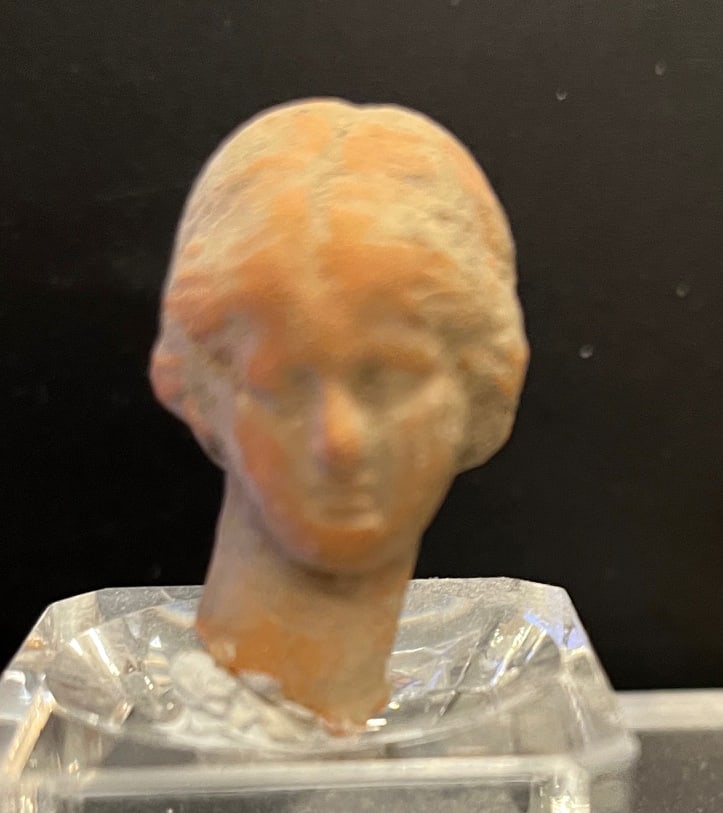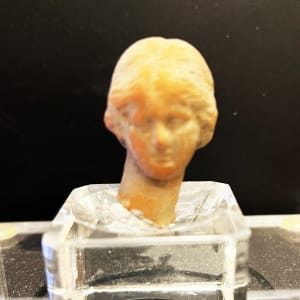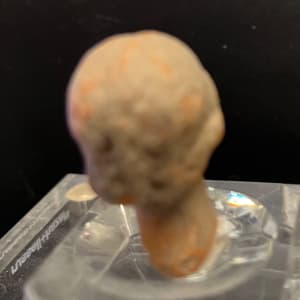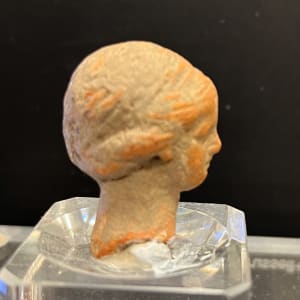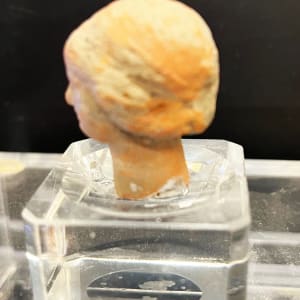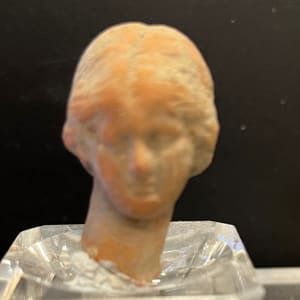Sacred World Art Collection: Recent Donations
- August 13, 2024 - December 20, 2024
- Exhibition
- /
- Artwork
- /
- Artists
Head of Aphrodite. Conceptualization: Greek, 4th century BCE. Tradition of Praxiteles. Realization: Hellenistic, ca. 300 BCE, terracotta.
This lovely head was not sculpted by Praxiteles himself, but it was made within an artistic tradition that he originated. Praxiteles (c.400-330 BCE) was the most famous Greek sculptor of the 4th century BCE. He also was one of the most influential on the subsequent history of Western sculpture. He is best known for having been the first to sculpt a life-sized figure of a female nude – probably the “Aphrodite of Knidos.” That sculpture has been lost, as have perhaps all but one of his original carvings.
Nevertheless, his influence was profound. Critics celebrated him for centuries. His work was pictured on numerous Roman coins. So many full-scale Roman replicas survive that a general feeling for his remarkable style is possible. The modern world remains enchanted by his gifts of musical proportions and matchless grace. The name of no other Greek artist is more widely known. What he gave to sculpture was the gift of life. Praxiteles is a bridge between the Classical art of the Hellenic Age and Hellenistic art. The conceptual transition is from images that convey the idea of life to images that convey the actual sensation of being alive.
The primary aim of Praxiteles was reality, tactile reality. To deities who seem to have been somewhat remote in the Classical sculpture of the 5th century BCE, he humanized by means of a radical realism placed within sculpted settings of ordinary life. His figures were given a highly naturalistic pose, a sinuous S-curve and a surface as smooth as skin. His proportions are taller than the Classical canon of Polyclitus. His faces tend to be triangular, and his hair impressionistic.
Contemporary critics spoke of his surfaces as breathtakingly sensual, extremely tactile. They said it was as if these bodies could “spring to life at any moment.” Nothing like this had ever been seen before. Moreover, these marble faces and figures were polished to a level of transcendent luminosity, and his faces have a parallel serenity. This is not merely physical realism; it is metaphysical realism. His sensitivity to light was as remarkable as his sensitivity to solid structure. Each face and figure is lighted and shadowed with a sfumato that was not seen again until Leonardo.
This terracotta head of the Goddess of Love and Beauty looks back to the ideals laid down by Praxiteles. It is far from the earthly realism of Roman heads that were being sculpted at the same time. The soft realism of this Goddess is a spiritual realism. The transitions from feature to feature are as gentle as breaths. The form as a whole can almost float. It is held together by the weight of light. What we see is not merely matter but spirit-matter.
This particular head-type is illustrated in TANAGRA AND THE FIGURINES (1986, p.146) by the noted authority Reynold Higgins, Deputy Keeper of Greek and Roman Antiquities at the British Museum. Higgins observes (p.144) that: “Her oval face, with its sensuous expression, and the abundant, centrally parted hair recall the famous Knidian Aphrodite of the sculptor Praxiteles.” It is interesting that this is the only time Higgins makes a direct comparison between the great Praxiteles and the head of one of the tiny Tanagra figurines in his book. I am grateful to Professor Andrew Stewart of UC-Berkeley for his reference. (FLG)
- Subject Matter: Woman
- Inventory Number: 2024.050
- Collections: Sacred World Art Collection

